How To Dress Like a Lawyer

They’re not fluffing their feathers-they’re donning their armor.
Research from Northwestern University dubbed this “enclothed cognition”: the simple act of wearing specific attire can improve performance in attention-demanding tasks (source).
In legal settings where presence and precision define trust, those crisp lines and classic silhouettes function as a silent argument in their favor.
Ever seen someone walk into a room and command it-without even speaking? That’s the suit doing half the work.
Every lawyer-litigator or corporate counsel, junior associate or partner-knows what it feels like to enter a space where first impressions aren’t just fast; they’re final.
Their outfit isn't a costume-it’s a signal: of discipline, authority, and control. And the sharper that signal, the clearer the perception of competence (source). Think Harvey Specter entering a Manhattan boardroom. Would you trust him in chinos?
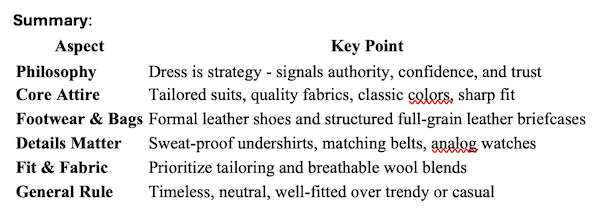
The Secret Uniform: What Lawyers Actually Wear to Be Taken Seriously
Don’t guess what “formal” means-understand the unspoken code.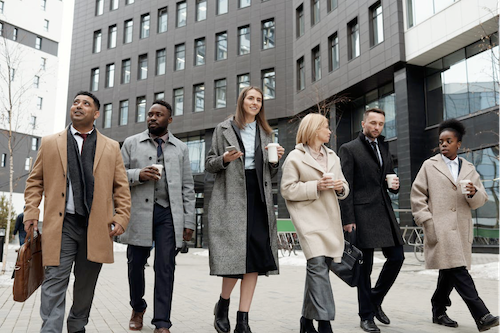
Imagine if Clarence Darrow rolled into court wearing skinny jeans and a hoodie. Legendary rhetoric, lost credibility.
A lawyer’s dress code isn’t just “smart.” It’s an orchestration of trust.
The key is sartorial neutrality with strategic sharpness-clothes that invite confidence without distraction (source).
Here’s what that looks like:
For Men:
- Suits: Charcoal grey, navy, or midnight blue-never black unless attending court, funerals, or fundraisers. Stick to notch or peak lapels; shawl lapels are too casual. Two-button jackets are standard. Jacket length should cover the buttocks (around 29" to 31" long for average height).- Shirts: Crisp white or ice blue. Avoid button-down collars-they’re business casual. Opt for spread or cutaway collars (3.5" collar point length). French cuffs are acceptable if paired with subtle cufflinks (think brushed silver, not novelty).
- Ties: Woven silk with a subtle pattern. Grenadine ties are highly regarded for texture without flash. Tie width should align with lapel width (2.75" to 3.25").
- Shoes: Black Oxfords (cap-toe), or dark oxblood derbies. Never square toed. Leather soles are a must in formal practice settings. Heel height typically 1.0"; sole thickness no more than 0.5" for sleekness.
For Women:
- Suiting: Tailored pantsuits, skirt suits (knee-length or slightly below), or sheath dresses with matching blazers. Go for wool blends or twill with inner lining to retain shape. Jacket sleeve should fall 1/4" above the base of the thumb.- Blouses: Silk, high-thread-count cotton (120s or more), or jersey-knit with weight. No sheer fabrics or frills. Choose structured necklines (boat necks, high Vs, or minimal crew styles).
- Shoes: Closed-toe pumps (2–3-inch heel max), almond-toe flats, or low block heels. Avoid patent leather unless in evening law firm events. Heel base should be at least 0.5" wide for balance.
Take a legal intern on their first client consult. If they show up in khaki chinos and a shirt without a collar stay, the room reads them as unreliable. But in a well-fitted navy suit, brogue oxfords, and a wool tie with a tight four-in-hand knot? They look like they belong-even before they speak.
People don’t notice when a lawyer dresses well – but they notice instantly when something’s off.
You’ve nailed the outside – but what about the layer that touches the skin and shapes confidence?
What Bags Do Lawyers Carry? (And Why It’s a Bigger Deal Than You Think)
Your briefcase isn’t just storage-it’s reputation in your hand.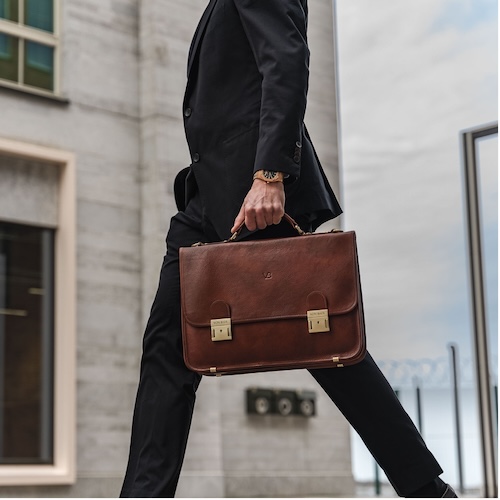
Let’s put it this way: would a top lawyer walk into court with a messenger bag slung over one shoulder like he was headed to Starbucks?
A lawyer’s bag does more than hold files-it tells the courtroom who just walked in.
For most lawyers, Von Baer recommends a structured leather briefcases or slim portfolio bags with room for legal pads, contracts, a tablet, and business cards.
But the real priority? Organization with authority. If it flops, flaps, or frays, it fails.
What separates a lawyer’s bag from a commuter’s?
- Durability disguised as elegance: Full-grain leather, reinforced stitching (minimum 6 stitches per inch), solid metal clasps. Not faux leather or "genuine leather" (which is a lower-quality grade). You want vegetable-tanned, hand-stitched leather that ages like trial wisdom.- Functional hierarchy: Layout matters. A great briefcase has vertical file compartments to prevent document creasing, a padded laptop section (13" to 15.6" capacity), and slim pockets for pens that don’t roll out when opened. Picture a surgeon’s kit-every tool exactly where it should be.
- Professional gravity: A firm silhouette that holds shape, even when empty. When it slouches, so does perception. Aim for bags with 2.5 to 4 inches in depth and a structured base with internal framing (see more here).
Consider an in-house counsel who carries a soft tote bag to a board meeting. That tote might be designer, but if it’s collapsed on the table with disorganized contents spilling out, it undermines every prepared slide they present. Imagine the CEO glancing down at an Apple charger tangled around lip balm and an open protein bar. Not exactly a power move.
Good lawyers bring the facts. Great ones carry them in something unforgettable.
Now that the bag sets the tone, what’s the wardrobe that completes the authority?
Why the Right Undershirt, Belt, or Watch Changes Everything
Tiny details tell big stories-especially under pressure.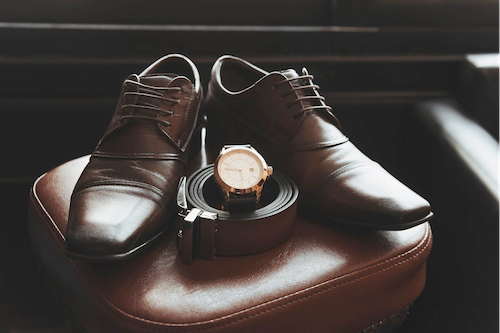
Let’s get brutally honest. You can wear a thousand-dollar suit, but if your belt creaks like your grandfather’s recliner or your sweat marks start spreading like a Rorschach test, all that polish goes straight down the courtroom drain (source).
No one will see the undershirt, but if it’s sweat-stained or bunched under the collar? Everyone notices. Same goes for belts that squeak or watches that blink like gadgets.
Want to make a lawyer feel invincible walking into that 8 a.m. arbitration?
Focus on:- Undershirts: Lightweight, moisture-wicking blends like rayon/modal or micromodal. Brands like Thompson Tee use patented sweat-guard technology to prevent courtroom pit marks. V-necks are ideal under open-collar shirts to stay hidden. Weight should be under 4.5 oz per square yard for layering.
- Belts: Full-grain leather, single-stitch edge, classic square buckle. Match metal to their watch. Ratchet belts (like Anson Belt) offer micro-adjustability-18 to 32 track positions versus 5 for traditional holes.
- Watches: Analog only. Nothing screams unprepared like checking your smart watch for messages mid-trial. Entry-tier luxury options include Seiko SARB033 (38 mm case, 11 mm thick, 50-hour reserve), Citizen Chronomaster (±5 sec/year accuracy), or for a splurge, a vintage Omega De Ville.
A former DA once said his grandfather gifted him a leather-strapped watch on graduation day. He never wore it to class, but on his first court appearance, the moment he fastened it, he said: "That’s when I became a lawyer."
The invisible comforts are often what get lawyers through visible stress.
Layers might polish the exterior, but the real transformation happens in how a lawyer feels inside their clothes.
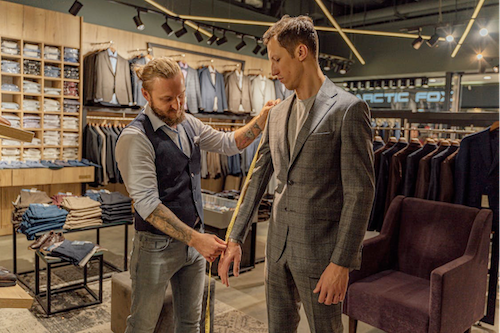
You wouldn’t run a marathon in steel-toed boots. So why should a lawyer be expected to win a case in a baggy, sagging blazer that folds like origami every time they sit down?
The Fabric of Confidence: Why Material, Cut, and Fit Aren’t Negotiable
It’s not about labels-it’s about how the garment moves with (not against) the person wearing it.
You wouldn’t run a marathon in steel-toed boots. So why should a lawyer be expected to win a case in a baggy, sagging blazer that folds like origami every time they sit down?
Poorly cut suits-boxy shoulders, loose sleeves, too-long hems-make even the sharpest minds look amateur. That’s why most lawyers either go made-to-measure or spend to tailor off-the-rack suits.
Here’s what to know:
- Wool is the gold standard-breathable, insulating, drapes with gravity. Midweight (8.5 to 10 oz per square yard) suits handle all-season wear.- Super 100s to 130s wool strikes the sweet spot between structure and softness. Super 140+ sounds fancy but creases easier and doesn’t hold its form under courthouse humidity.
- Tailoring zones to watch: shoulders (must hug but not squeeze), sleeve length (half-inch of shirt cuff should peek), trousers (break just above the shoe), blazer waist (should taper without pulling). Jacket shoulder seam should end at the natural shoulder bone.
For example, a partner at a mid-sized firm in Chicago might own three suits. But each one is tailored so precisely it performs like ten. The lawyer rotates navy, charcoal, and light grey-but they all fit like confidence itself. No pulling at buttons. No bunching at the elbow. Every move looks purposeful.
Gifting a lawyer a suit or jacket? Don’t guess sizing. Get them a gift card for tailoring at a reputable shop-or better, a session with a personal stylist. Boutique services like Indochino, SuitSupply MTM, or Oliver Wicks offer high-fit custom options with online fittings. Expect to pay $400 to $800 for MTM entry level, with 2 to 3 weeks turnaround time.
Nothing kills gravitas faster than swimming in fabric that fits someone else.
Quick Style Takeaways for Gift Givers & Wardrobe Upgraders:
- Stick to timeless over trendy-law is slow to change, and so is its dress code.- Never confuse casual with comfortable-true confidence starts with precise fit and lasting fabric.
- Choose gifts that build rituals-a lawyer who polishes their shoes the night before a trial wins half the case before stepping into court.
Do You Need An Attorney?
If so, post a short summary of your legal needs to our site and let attorneys submit applications to fulfill those needs. No time wasted, no hassle, no confusion, no cost.

